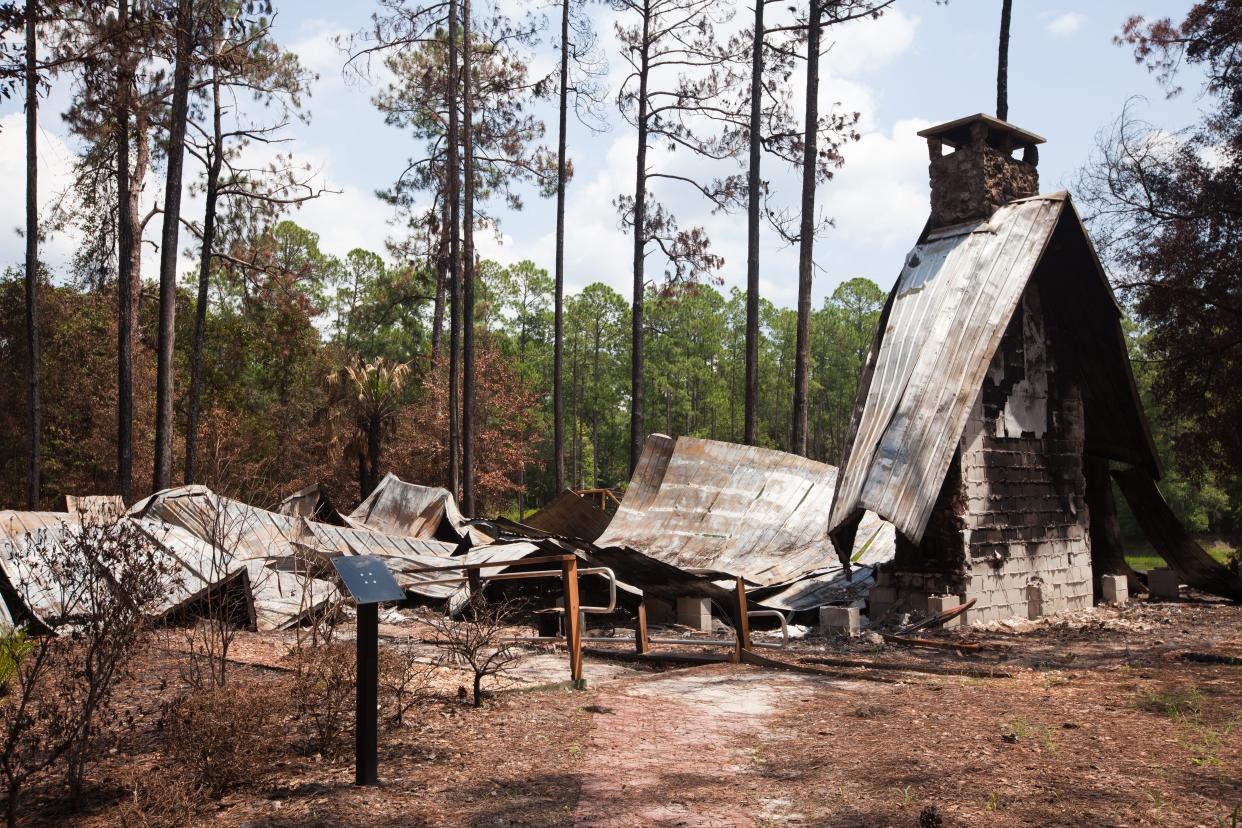Not just Maui: Florida has wildfires, too. Here's how to protect your home

Catastrophic wildfires have been in the news lately. The tragedy in Maui is horrific. In 2018, the “Camp” fire almost completely destroyed the town of Paradise California. It may seem like Florida, with its wet humid climate, may be shielded from these types of disasters. While not garnering as much attention as in western states, Florida is not immune from catastrophic wildfires.
According to the First Street Foundation, a nonprofit research group, Florida now has the third-largest number of properties at risk for fire, after California and Texas. This seems reasonable considering over 50% of Florida is covered in forests, along with Florida being known as the lightning capital of the United States. Additionally, a lot of the native vegetation is easily consumed by fire, even when green.
As a former forester with the Florida Forest Service, I have been aware of many instances where wildfires damaged homes. The worst in my recent memory took place on May 17, 1985, a day that became known as Black Friday. In two days, 131 homes were completely burned, and another 200 damaged from a wildfire in Palm Coast.
Florida wildfire, smoke map: Track latest wildfires, red flag warnings
Weather alerts: Track extreme weather in Florida
Are there things we can do to reduce the chance of wildfire damaging our homes? According to the Florida Forest Service's “Be Wildfire Ready” program, there are several steps that can be completed to prepare your landscape, and your home to reduce damage from wildfires.
Preparing your landscape
If there were a theme for this topic it would be to create a defensible space. In other words, creating a buffer between your home and the fire that reduces the fire intensity before it gets to you. This involves dividing your yard into 4 zones.
The first zone extends 30 feet from your home. In this zone, remove all dead vegetation, including plants, leaves, grass and weeds, from your yard, roof, rain gutters, windows and under decks. To avoid flame sources close to your roof, remove branches that hang over your roof and keep dead branches 10 feet away from your chimney. To prevent fire from spreading tree to tree, trim the canopies away from each other.
The next zone, called the fuel reduction zone, extends 30-60 feet from your house. In this zone, keep the grass or groundcover mowed to a maximum height of 4 inches. Remove combustible material by picking up fallen leaves, needles, twigs, bark, cones and small branches. Help create space between plants by growing groundcover between them.
The transition zone extends 60-100 feet from your home. In this zone, prevent the possibility of crown fires by removing or trimming low-growing shrubs under pine trees.
Finally, in the perimeter zone that extends out 100+ feet from your home, reduce the amount of combustible fuel such as palmettos and underbrush by bushhogging or mowing to keep it low. This is important because many of the native shrubs in Florida contain volatile oils that allow them to burn even when green.
Prepare your home
Taking steps to make your home less conducive to fire is also important. Inside your home, test smoke detectors and keep fire extinguishers ready. Make sure your gutters and roofs are clear of leaves and debris that can catch fire should an ember land on them. The material your roof is made of is important as well. Class A asphalt/ fiberglass shingles, sheet metal, and tile are all less combustible than wooden shingles. Consider constructing your walls with fire-resistant materials as well as keeping them clear of foliage or brush. We don’t often think about windows but ensure that they are constructed out of materials that can withstand high temperatures. Dual pane windows can also help insulate keeping the heat out. Finally, consider the materials that decks and balconies are made of. Use fire-resistant materials as well as furnish them with fire-resistant furniture.
With a little planning, a less flammable landscape with a defensible space can still be aesthetically pleasing while at the same time reducing the likelihood of damage from wildfire. For more information on creating a defensible space around your home go to: https://edis.ifas.ufl.edu/publication/FR076.
Larry Figart is an urban forestry extension agent with the University of Florida/IFAS.
This article originally appeared on Florida Times-Union: How to protect your home from a wildfire
